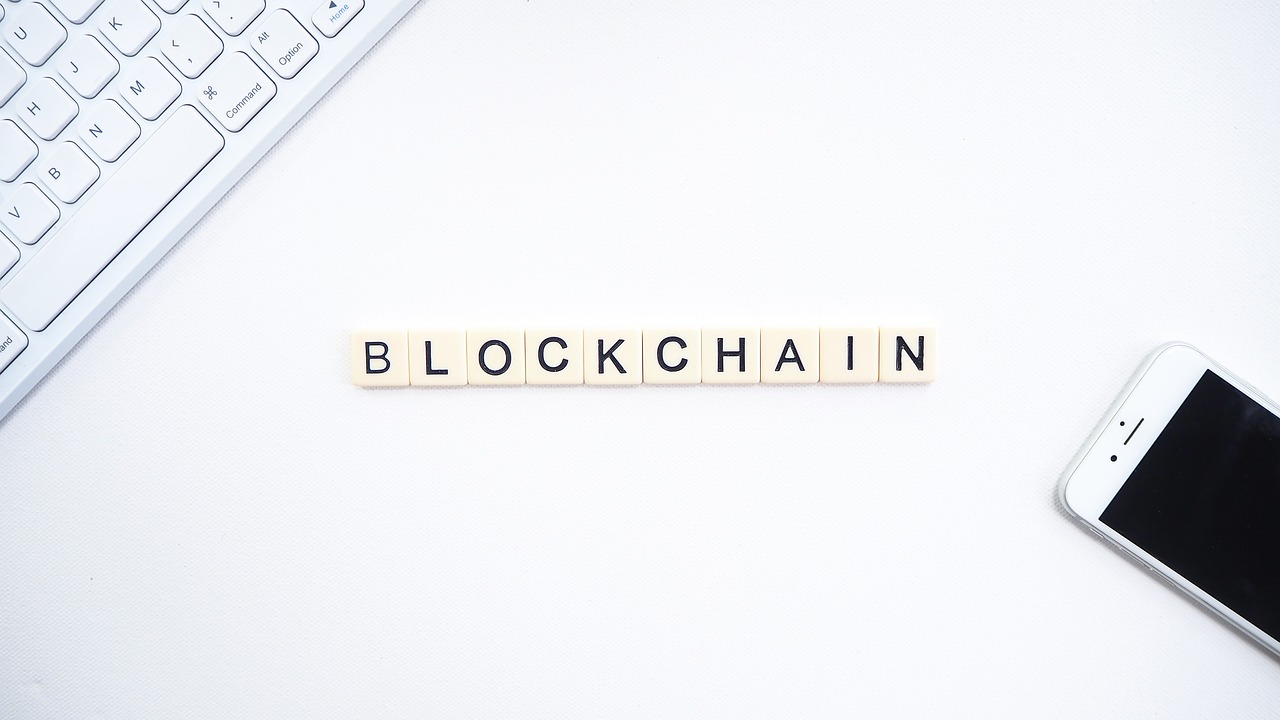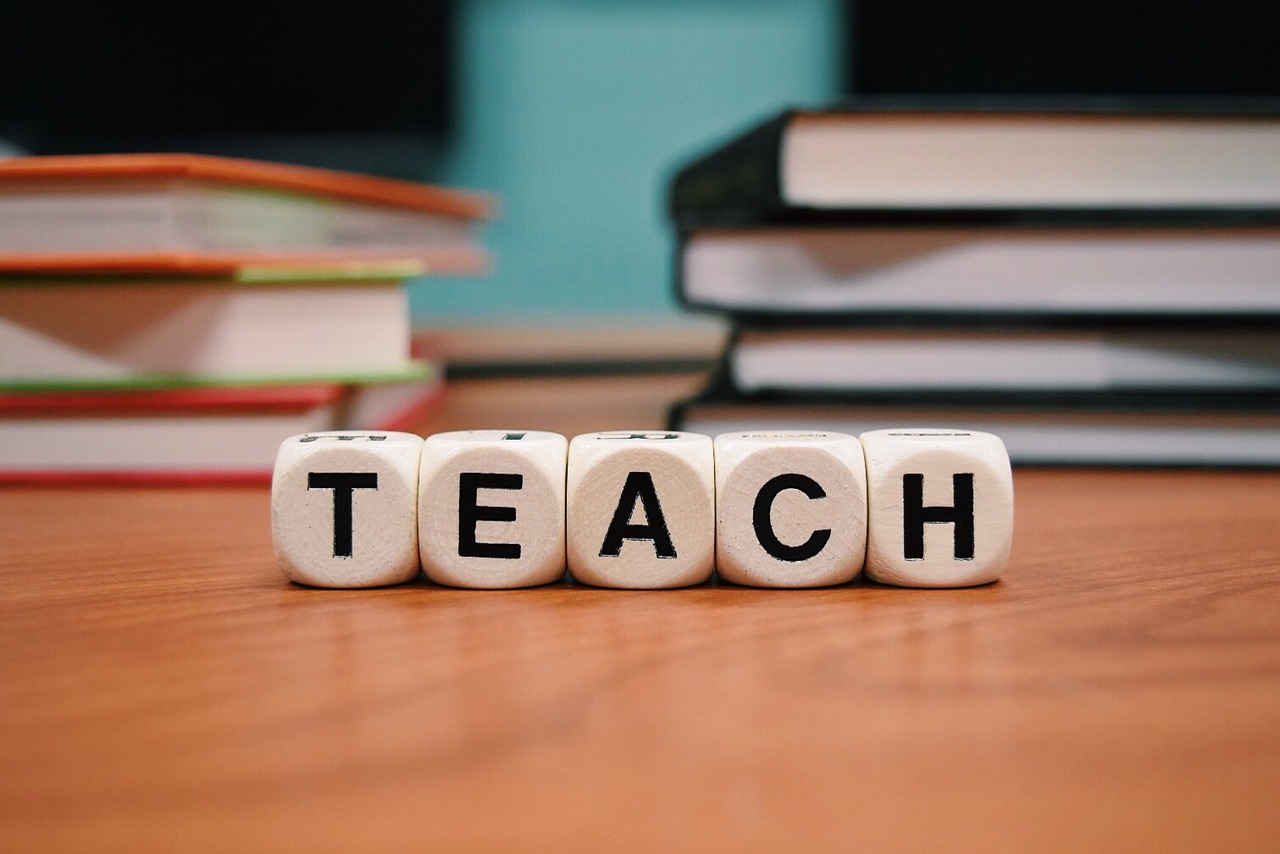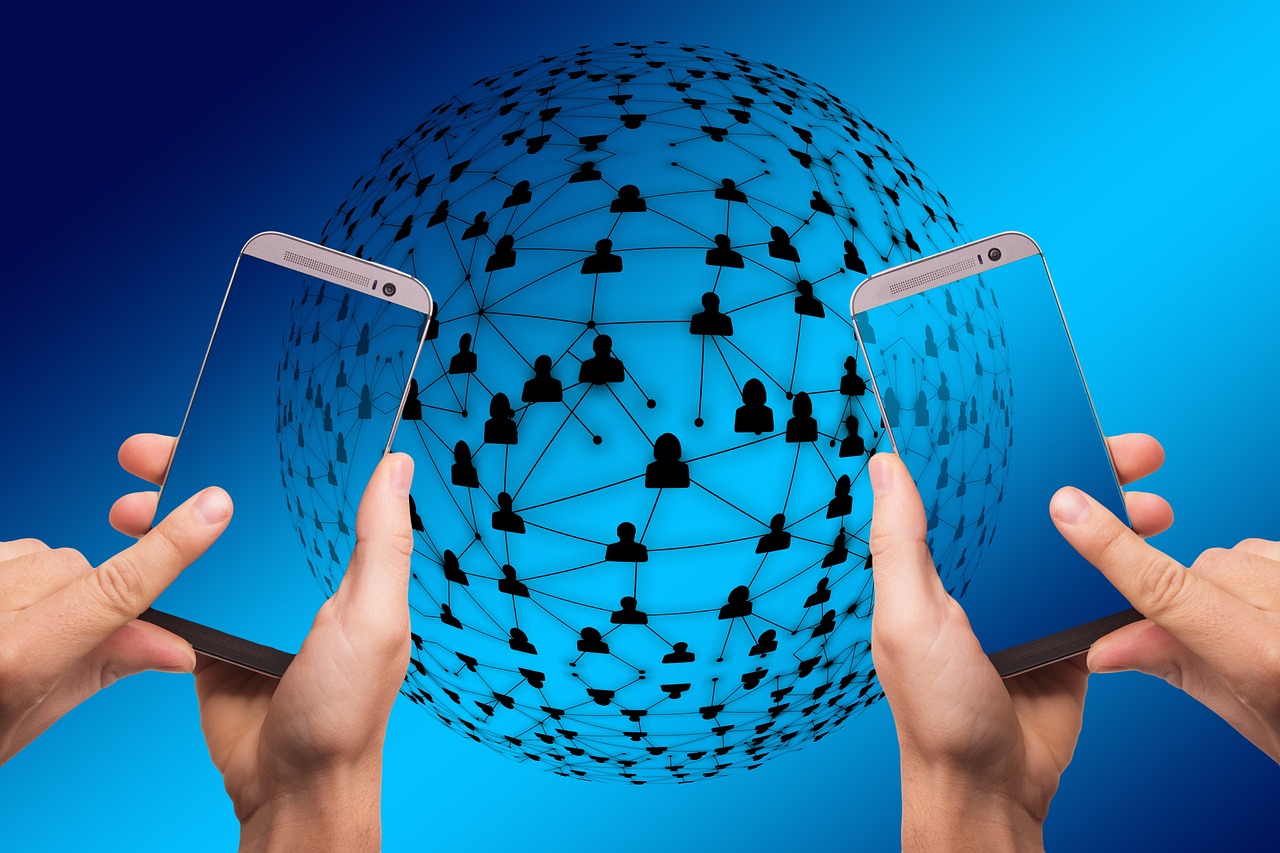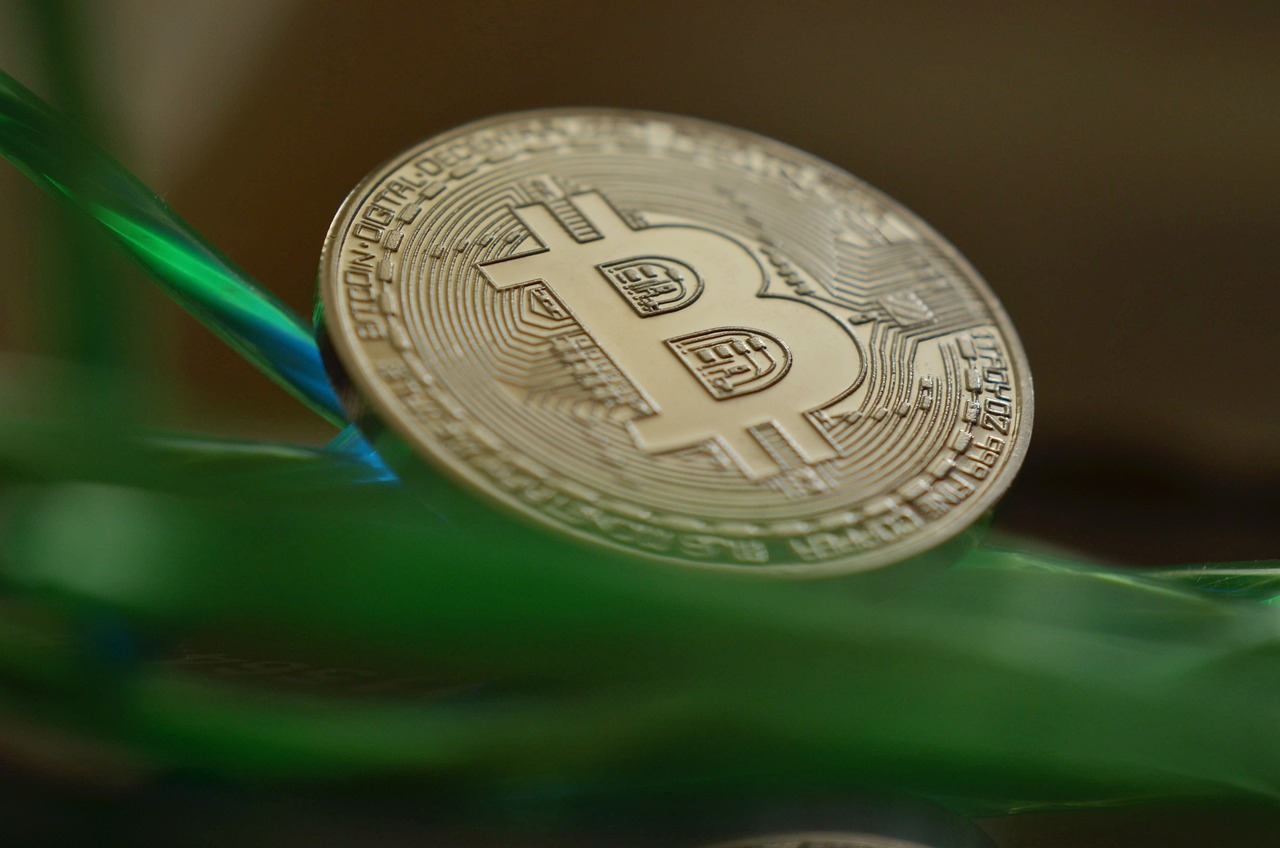How Blockchain is Revolutionizing the Education Sector
In a world where technology continues to reshape our daily lives, blockchain stands out as a game-changer, particularly in the education sector. Imagine a system where academic credentials are verified in an instant, where learners have full control over their educational journeys, and where administrative processes are streamlined to enhance efficiency. This isn't just a dream; it's the potential reality that blockchain technology brings to the table. With its unique ability to create secure, transparent, and decentralized systems, blockchain is poised to revolutionize education in ways we are only beginning to understand.
One of the most significant challenges in education today is the verification of academic credentials. Employers often face difficulties in determining the authenticity of degrees and certifications. Here, blockchain technology provides a secure and tamper-proof method for verifying these credentials. By storing academic records on a blockchain, institutions can significantly reduce fraud and streamline the hiring process for employers. Imagine a world where a simple scan of a QR code can confirm a candidate's qualifications instantly, eliminating the lengthy background checks that often delay hiring.
Decentralized platforms powered by blockchain can offer learners greater control over their educational content. This shift enables personalized learning experiences tailored to individual needs, fostering collaboration among peers. With blockchain, students can connect directly with one another, sharing resources, knowledge, and skills without the need for intermediaries. This peer-to-peer learning model not only enhances the educational experience but also builds a sense of community among learners.
Imagine being able to connect with a fellow student halfway across the globe, sharing insights and resources without any barriers. Blockchain facilitates this kind of peer-to-peer learning by creating a network where students can collaborate directly. They can exchange notes, study materials, and even tutoring sessions, enriching their learning experience in a way that traditional educational models often fail to achieve.
Students can engage in collaborative projects using blockchain, ensuring that contributions are accurately tracked and rewarded. This transparency not only enhances motivation but also fosters teamwork. By utilizing smart contracts, students can establish agreements on project contributions, ensuring that everyone's efforts are recognized and valued. This approach not only develops essential skills but also prepares students for the collaborative nature of the modern workforce.
In a blockchain-enabled educational environment, resource sharing becomes seamless. Students can access shared materials and expertise, enriching their learning experience. Whether it's a rare textbook, a unique research paper, or expert advice from a mentor, blockchain allows for efficient resource sharing among students. This not only democratizes access to information but also encourages a culture of collaboration and support.
Blockchain can introduce token-based systems that reward students for their participation and engagement. Imagine earning tokens for attending classes, completing assignments, or collaborating with peers. These tokens could then be redeemed for educational resources, discounts on tuition, or even scholarships. This innovative approach not only encourages active involvement in the learning process but also makes education more rewarding and engaging.
Administrative tasks in education can often be cumbersome and time-consuming. However, blockchain technology can simplify processes such as enrollment, record-keeping, and payment processing. By automating these tasks, educational institutions can increase efficiency and reduce costs. This allows educators to focus more on teaching and less on paperwork, ultimately benefiting students.
Imagine a world where tuition payments are automated through smart contracts. These contracts can ensure timely transactions, reducing administrative overhead for educational institutions. Students can set up a payment schedule that automatically deducts tuition fees from their accounts, ensuring that payments are made on time without the hassle of manual processing. This not only improves the financial management of institutions but also provides peace of mind for students and their families.
Managing student records securely is crucial in education. Blockchain provides a secure method for handling these records, ensuring data integrity and privacy. Authorized stakeholders can access relevant information without the risk of data breaches or unauthorized access. This level of security is essential in today's digital age, where data privacy is a growing concern.
One of the most exciting aspects of blockchain technology is its potential to bridge educational gaps. By providing access to quality resources and courses, regardless of geographic location, blockchain fosters inclusivity in education. Students from diverse backgrounds can access the same high-quality educational materials, leveling the playing field and allowing everyone to benefit from a global education.
Blockchain allows for the issuance of microcredentials, enabling learners to gain recognition for specific skills and competencies. This is particularly important in today's job market, where employers are increasingly looking for specific skill sets rather than traditional degrees. Microcredentials can enhance employability and provide learners with a competitive edge in a global job market.
With blockchain, students can participate in cross-border learning experiences, accessing diverse educational content and collaborating with international peers. This exposure not only broadens their knowledge but also fosters cultural understanding and global citizenship. Imagine studying a course in digital marketing while collaborating with students from different countries, sharing insights and learning from one another's experiences.
Q: How does blockchain ensure the security of academic credentials?
A: Blockchain uses cryptographic techniques to create a secure and tamper-proof ledger, ensuring that academic credentials cannot be altered or forged.
Q: Can blockchain be used for online learning?
A: Absolutely! Blockchain can power decentralized learning platforms, allowing for personalized learning experiences and peer-to-peer collaboration.
Q: What are microcredentials?
A: Microcredentials are certifications that recognize specific skills or competencies, making them valuable in today's job market.
Q: How can blockchain reduce administrative costs in education?
A: By automating processes like enrollment and payment through smart contracts, blockchain can significantly reduce the time and resources required for administrative tasks.

Enhancing Credential Verification
In today's competitive job market, the importance of credential verification cannot be overstated. Employers are increasingly looking for ways to ensure that the qualifications presented by candidates are genuine. This is where blockchain technology steps in, providing a solution that is both secure and tamper-proof. Imagine a world where your academic achievements are stored on an immutable ledger, accessible at any time by potential employers. This revolutionary approach not only reduces the likelihood of fraud but also streamlines the hiring process, making it more efficient for everyone involved.
Blockchain allows educational institutions to issue digital diplomas and certificates that are securely stored on the blockchain. This means that any employer can verify a candidate's credentials in real-time without the need for lengthy background checks. The process is as simple as scanning a QR code or entering a unique identifier. The transparency that blockchain provides ensures that all parties can trust the information being presented.
Furthermore, the decentralized nature of blockchain means that no single entity controls the data. This enhances data integrity and privacy, as students have ownership of their credentials. They can choose who to share their information with, giving them greater control over their personal data. This shift not only empowers learners but also fosters a culture of trust between educational institutions and employers.
To illustrate the impact of blockchain on credential verification, consider the following table:
| Traditional Method | Blockchain Method |
|---|---|
| Time-consuming background checks | Instant verification via blockchain |
| Centralized control of records | Decentralized ownership by students |
| High risk of fraud | Secure and tamper-proof records |
| Limited access to records | Accessible anytime, anywhere |
As we move forward, the integration of blockchain technology in education is poised to transform the landscape of credential verification. Institutions that adopt this technology will not only enhance their reputation but also attract a diverse pool of talent, eager to showcase their verified skills and achievements. In a world where trust and transparency are paramount, blockchain stands out as a beacon of innovation, paving the way for a more efficient and reliable educational system.

Decentralized Learning Platforms
Imagine a world where education is not confined to the four walls of a classroom, but rather, it is a vibrant ecosystem where learners have the freedom to explore, collaborate, and create. , powered by blockchain technology, are making this dream a reality. These platforms empower learners by providing them with greater control over their educational content and experiences. Gone are the days when students had to rely solely on traditional institutions to dictate their learning paths. Now, they can curate their own educational journeys, choosing what, when, and how they learn.
At the heart of these decentralized platforms is the idea of personalized learning. Each learner is unique, with different interests, strengths, and learning styles. Blockchain technology allows for the creation of tailored educational resources that cater to individual needs. For instance, a student passionate about coding can access specialized courses and materials, while another interested in art can dive into creative workshops. This level of customization not only enhances engagement but also fosters a deeper understanding of the subject matter.
Furthermore, decentralized platforms encourage collaboration among peers. Students can connect with one another directly, sharing resources, knowledge, and skills without the need for intermediaries. This peer-to-peer learning model is akin to a group of friends working together on a project; they bring their unique perspectives and expertise to the table, enriching the overall learning experience. Imagine a scenario where a student in Brazil collaborates with a peer in Japan on a science project, leveraging their diverse backgrounds to produce something truly innovative.
Blockchain facilitates this peer-to-peer learning by creating a transparent and secure environment for knowledge exchange. Students can easily share their insights and resources, building a community of learners who support one another. This collaborative spirit not only enhances the learning process but also instills a sense of belonging among students. Just like in a bustling marketplace, where ideas and skills are traded freely, decentralized learning platforms foster an environment where knowledge flows seamlessly.
One of the standout features of decentralized learning platforms is the ability to engage in collaborative projects. Students can work together on assignments, ensuring that each contribution is accurately tracked and rewarded through blockchain technology. This tracking mechanism serves as a powerful motivator, as students can see the tangible impact of their efforts. Imagine a group of students creating a documentary; with blockchain, they can easily attribute credit for each segment, promoting teamwork and accountability.
In addition to collaborative projects, blockchain enables efficient resource sharing among students. This means that learners can access a wealth of shared materials, from textbooks to video lectures, enriching their educational experience. Think of it as a library that is open 24/7, where anyone can contribute resources and benefit from the collective knowledge of the community. This not only reduces the cost of education but also democratizes access to high-quality learning materials, ensuring that everyone has the opportunity to succeed.
In conclusion, decentralized learning platforms are truly transforming the educational landscape. By providing learners with greater control, fostering collaboration, and enabling resource sharing, these platforms are setting the stage for a new era of education. As we embrace this change, we must ask ourselves: Are we ready to seize the opportunities that blockchain technology offers in the realm of learning?
Q1: What are decentralized learning platforms?
A1: Decentralized learning platforms are educational systems that leverage blockchain technology to provide learners with greater control over their educational content and experiences, enabling personalized learning and collaboration.
Q2: How does blockchain enhance collaboration among students?
A2: Blockchain facilitates peer-to-peer learning by creating a secure and transparent environment for knowledge exchange, allowing students to share resources and insights directly with one another.
Q3: What are the benefits of collaborative projects in decentralized learning?
A3: Collaborative projects allow students to work together, ensuring that contributions are accurately tracked and rewarded, which enhances motivation, teamwork, and accountability.
Q4: Can students access shared resources on decentralized platforms?
A4: Yes, decentralized platforms enable efficient resource sharing, allowing students to access a wide range of shared materials, enriching their educational experience.

Peer-to-Peer Learning
Imagine a classroom where the walls are invisible, where students can connect with each other across the globe, sharing knowledge and resources without any barriers. That’s the beauty of facilitated by blockchain technology. In this innovative educational landscape, students are no longer just passive recipients of information; they become active participants in their learning journey. This model not only enhances collaboration but also fosters a sense of community among learners.
Blockchain technology acts as a bridge, linking students directly and allowing them to share resources, knowledge, and skills. This is akin to a digital marketplace of ideas, where everyone can contribute and benefit. For instance, consider a student in New York who has mastered Python programming. Through a decentralized platform, they can connect with another student in Tokyo who is struggling with the same subject. They can exchange insights, share coding resources, and even collaborate on projects, all while building a supportive learning relationship.
Moreover, peer-to-peer learning encourages students to take ownership of their education. They can seek out mentors among their peers or offer help to those who may be struggling. This reciprocal learning process not only enhances understanding but also builds confidence. When students teach others, they reinforce their own knowledge and skills, creating a win-win situation for everyone involved. Just like a potluck dinner, where everyone brings a dish to share, peer-to-peer learning allows students to contribute their unique strengths to the table.
Incorporating blockchain into peer-to-peer learning also ensures that contributions are accurately tracked and rewarded. This is where the concept of collaborative projects comes into play. Students can work together on assignments, and the blockchain can record each member's contributions. This transparency not only enhances motivation but also instills a sense of accountability. Imagine a group of students working on a research paper; the blockchain can keep a log of who wrote which section, making it easy to acknowledge everyone’s input. This system of recognition can lead to better teamwork and a more enriching educational experience.
Additionally, the resource-sharing capabilities of blockchain allow students to access a wealth of materials and expertise. Whether it's a unique study guide, an insightful article, or even a recorded lecture, students can share valuable resources with one another. This sharing culture transforms the learning experience into a communal journey rather than an isolated endeavor. As students pool their resources together, they create a rich tapestry of knowledge that benefits everyone.
In conclusion, peer-to-peer learning powered by blockchain technology is not just a trend; it's a revolutionary approach that transforms how students interact, share, and learn from one another. By breaking down traditional barriers and fostering collaboration, we are paving the way for a more inclusive and engaging educational environment.
- What is peer-to-peer learning? Peer-to-peer learning is an educational model where students learn from and with each other, sharing knowledge and resources directly without intermediaries.
- How does blockchain facilitate peer-to-peer learning? Blockchain provides a secure and transparent platform that connects students, allowing them to share resources and track contributions in collaborative projects.
- What are the benefits of peer-to-peer learning? Benefits include enhanced collaboration, increased motivation, a sense of community, and ownership of the learning process among students.
- Can peer-to-peer learning be effective in online education? Absolutely! Peer-to-peer learning is particularly effective in online education, where students can connect globally and share diverse perspectives.

Collaborative Projects
In the realm of education, the concept of takes on a new dimension with the integration of blockchain technology. Imagine a classroom where students from different corners of the world can come together, share ideas, and work on a project as if they were sitting next to each other. Blockchain makes this possible by providing a transparent and secure platform where contributions are not only tracked but also rewarded. This is akin to a digital playground where creativity and innovation thrive without the usual barriers.
Through blockchain, students can engage in projects that require teamwork, fostering a sense of community and collaboration. Each participant's contributions are recorded on the blockchain, ensuring that every idea, every piece of work is acknowledged. This not only boosts motivation but also instills a sense of responsibility among students. They know that their efforts are visible and valued, which can significantly enhance their commitment to the project.
Moreover, the use of blockchain in collaborative projects allows for the creation of a decentralized ledger that maintains the integrity of the work produced. This means that if a student contributes a brilliant idea or a unique solution, it is securely documented and cannot be altered or claimed by someone else. This transparency is crucial in a collaborative environment, as it builds trust and encourages open collaboration.
Consider a scenario where students from various universities are working on a joint research project. With blockchain, they can seamlessly share their findings, documents, and resources. Each update is logged, and everyone involved can see the progress in real-time. This not only enhances communication but also allows for immediate feedback, leading to a more dynamic learning experience. It’s like having a digital whiteboard where ideas can flow freely without the fear of losing track of contributions.
Additionally, blockchain can facilitate the establishment of a reward system for collaborative efforts. For instance, students could earn tokens for their participation and contributions, which can be redeemed for various benefits, such as access to exclusive resources or mentorship opportunities. This incentivization can drive engagement and ensure that students are not just passive participants but active contributors to their learning journey.
In conclusion, blockchain technology is set to revolutionize the way collaborative projects are approached in education. By ensuring that contributions are recognized, fostering a sense of community, and providing a secure platform for sharing ideas, blockchain empowers students to collaborate more effectively than ever before. This shift not only enhances the learning experience but also prepares students for a future where teamwork and innovation are key skills in the global job market.
- What is blockchain technology?
Blockchain is a decentralized digital ledger that securely records transactions across multiple computers, ensuring data integrity and transparency. - How does blockchain enhance collaborative projects?
Blockchain provides a secure platform for tracking contributions, fostering trust, and incentivizing participation among students. - Can blockchain help in verifying academic credentials?
Yes, blockchain offers a tamper-proof method for credential verification, reducing fraud and streamlining hiring processes. - What are microcredentials?
Microcredentials are short, focused qualifications that recognize specific skills or competencies, often facilitated by blockchain technology. - How does blockchain promote global access to education?
Blockchain can bridge educational gaps by providing access to quality resources and courses, regardless of geographic location.

Resource Sharing
Imagine a world where students from different corners of the globe can effortlessly share their knowledge and resources with one another. This is not just a dream; it's a reality made possible by blockchain technology. With its decentralized nature, blockchain enables efficient resource sharing among students, allowing them to access a wealth of shared materials and expertise. This creates a dynamic and enriched learning environment that transcends traditional classroom boundaries.
One of the most exciting aspects of blockchain in education is how it fosters collaboration. Students can upload and share various resources such as notes, videos, and even entire courses with their peers. This collaborative spirit encourages a culture of learning where everyone contributes and benefits. Just think about it: a student in a rural area can access high-quality learning materials created by a top university halfway across the world. This not only enhances the learning experience but also promotes inclusivity.
Furthermore, the transparency provided by blockchain ensures that all contributions are accurately tracked. This means that when students share their resources, they receive recognition for their efforts, which can be pivotal in building their academic portfolios. Imagine if every time you shared a resource, it was automatically recorded as a part of your educational achievements. This level of acknowledgment can motivate students to engage more actively in their learning journeys.
To illustrate the impact of resource sharing through blockchain, consider the following table:
| Resource Type | Benefits | Impact on Learning |
|---|---|---|
| Study Materials | Access to diverse perspectives | Enhanced comprehension and retention |
| Online Courses | Flexible learning paths | Increased engagement and motivation |
| Peer Reviews | Constructive feedback | Improved critical thinking skills |
In conclusion, blockchain technology is transforming how students share resources, making education more accessible and collaborative. The ability to connect with peers and share knowledge across geographical boundaries not only enriches the learning experience but also prepares students for a future where collaboration and resource sharing are vital skills. As we move forward, embracing this technology will undoubtedly lead to a more interconnected and innovative educational landscape.
- What is blockchain technology? Blockchain is a decentralized digital ledger that records transactions across many computers securely and transparently.
- How does blockchain enhance resource sharing in education? It allows students to share materials securely and transparently, ensuring that contributions are recognized and valued.
- Can blockchain improve the quality of education? Yes, by providing access to diverse resources and facilitating collaboration, blockchain can enhance the overall educational experience.

Incentivizing Participation
Imagine a classroom where every student is not just a passive recipient of knowledge but an active participant, driven by the thrill of earning rewards for their engagement. This is the potential that blockchain technology brings to the education sector. By integrating token-based systems, educational institutions can create an environment that encourages students to dive deeper into their learning experiences. Think of it as gamifying education—students earn tokens for attending classes, completing assignments, or participating in discussions, which they can later redeem for various benefits such as discounts on future courses, access to exclusive resources, or even tangible rewards like books and gadgets.
But how does this work in practice? Well, let's break it down. When students engage with the material, they earn points that are securely recorded on the blockchain. This not only ensures transparency but also creates a sense of accountability. Students can see their progress and understand how their contributions matter. Moreover, these tokens can be traded or shared among peers, fostering a collaborative learning atmosphere. Imagine a student who excels in a particular subject sharing their tokens with a friend struggling in that area. This peer-to-peer support can significantly enhance the overall learning experience.
Furthermore, the introduction of incentives can lead to increased motivation. When students know that their efforts will be recognized and rewarded, they are more likely to participate actively. This can be particularly beneficial in online learning environments, where the absence of physical presence can sometimes lead to disengagement. With blockchain, institutions can track participation in real-time, providing immediate feedback and rewards that keep students engaged.
To illustrate the impact of incentivizing participation, consider the following table that outlines potential rewards and their corresponding activities:
| Activity | Reward |
|---|---|
| Attending a lecture | 5 Tokens |
| Completing an assignment | 10 Tokens |
| Participating in a group discussion | 7 Tokens |
| Helping a peer with their studies | 15 Tokens |
As shown in the table, each activity contributes to a cumulative reward system that motivates students to engage more deeply with their education. This approach not only enhances individual learning outcomes but also cultivates a sense of community among students, where collaboration and mutual support are at the forefront.
In conclusion, by leveraging blockchain technology to incentivize participation, educational institutions can transform the learning experience into an interactive and rewarding journey. With students feeling valued and recognized for their contributions, the traditional classroom dynamic can evolve into a vibrant ecosystem of learning, collaboration, and growth.
- What is blockchain technology? Blockchain is a decentralized digital ledger that securely records transactions across multiple computers, ensuring data integrity and transparency.
- How does blockchain enhance student engagement? By implementing token-based reward systems, blockchain incentivizes students to participate actively in their learning process.
- Can blockchain improve credential verification? Yes, blockchain provides a secure and tamper-proof method for verifying academic credentials, reducing fraud.
- What are smart contracts? Smart contracts are self-executing contracts with the terms of the agreement directly written into code, automating processes like tuition payments.

Streamlining Administrative Processes
In the fast-paced world of education, administrative processes can often become cumbersome and time-consuming. However, with the advent of blockchain technology, there’s a new dawn on the horizon. Imagine a world where enrollment, record-keeping, and payment processing are not just efficient but also secure and transparent. Blockchain is making this a reality, allowing educational institutions to streamline their administrative tasks significantly.
One of the primary benefits of blockchain in education is its ability to simplify the enrollment process. Traditionally, enrolling in a course involves a mountain of paperwork, verification steps, and waiting periods. With blockchain, this process can become almost instantaneous. Students can securely submit their information, which is then verified and recorded on a decentralized ledger. This not only speeds up the enrollment but also reduces the chances of errors that often occur with manual data entry.
Furthermore, blockchain enhances the integrity of student records. Imagine a scenario where your academic achievements are securely stored on a blockchain. This means that your grades, certifications, and transcripts are tamper-proof and easily accessible to authorized parties. No more lost records or disputes over grades! Educational institutions can manage student information with utmost confidence, knowing that it is protected against unauthorized changes.
Another area where blockchain shines is in the realm of payment processing. Tuition fees can be a headache for both students and institutions. Delayed payments can lead to administrative chaos, affecting everything from course registration to resource allocation. Here, smart contracts come into play. These self-executing contracts automate tuition payments, ensuring that funds are transferred only when specific conditions are met. This not only guarantees timely transactions but also minimizes administrative overhead. Institutions can save precious time and resources that can be redirected toward enhancing the educational experience.
To illustrate the potential impact of blockchain on administrative processes, consider the following table:
| Traditional Process | Blockchain Process |
|---|---|
| Manual enrollment with paperwork | Instant enrollment through secure digital submission |
| Paper-based record management | Decentralized, tamper-proof digital records |
| Delayed tuition payments | Automated payments through smart contracts |
In addition, the transparency that blockchain offers is a game-changer. With all transactions recorded on a public ledger, stakeholders can easily track and verify processes, fostering a culture of accountability. This transparency can also help in audits and compliance, ensuring that institutions adhere to regulations without the usual hassle.
In summary, blockchain technology is paving the way for a more efficient and secure educational landscape. By streamlining administrative processes, it not only saves time and reduces costs but also enhances the overall experience for students and educators alike. The future of education is not just about learning; it's also about how we manage and deliver that learning, and blockchain is at the forefront of this transformation.
- What is blockchain technology?
Blockchain is a decentralized digital ledger that records transactions across many computers securely and transparently. - How does blockchain enhance credential verification?
It provides a secure and tamper-proof method for verifying academic credentials, reducing fraud. - Can blockchain improve student record management?
Yes, it offers a secure way to manage student records, ensuring data integrity and privacy. - What are smart contracts?
Smart contracts are self-executing contracts with the terms of the agreement directly written into code, automating processes like tuition payments. - How does blockchain foster global access to education?
By providing quality resources and courses regardless of geographic location, blockchain encourages inclusivity in education.

Smart Contracts for Tuition Payments
Imagine a world where tuition payments are as seamless as sending a text message. Smart contracts are the key to making this dream a reality. These self-executing contracts, with the terms of the agreement directly written into code, revolutionize how educational institutions handle tuition payments. Instead of the traditional, often cumbersome methods of payment processing, smart contracts automate the entire process, ensuring that funds are transferred securely and efficiently.
One of the most significant advantages of using smart contracts for tuition payments is the elimination of intermediaries. In a conventional system, payment processors, banks, and administrative staff all play a role, which can lead to delays and additional fees. With smart contracts, the transaction occurs directly between the payer (the student) and the payee (the educational institution), significantly reducing the time and cost involved. This not only speeds up the enrollment process but also allows institutions to allocate resources more effectively.
Furthermore, smart contracts can be programmed to include specific conditions for payment. For instance, a student could set up a payment plan that automatically releases funds to the institution only when certain milestones are met, such as completing a course or achieving specific grades. This flexibility not only empowers students to manage their finances better but also encourages them to stay engaged in their studies. The transparency of the blockchain ensures that all parties can track the payment process in real-time, providing peace of mind.
Here’s a quick overview of how smart contracts streamline tuition payments:
| Feature | Benefit |
|---|---|
| Automation | Reduces administrative workload and processing time. |
| Direct Transactions | Minimizes fees and delays caused by intermediaries. |
| Conditional Payments | Encourages student engagement and accountability. |
| Transparency | Provides real-time tracking of payments and records. |
In conclusion, smart contracts for tuition payments not only simplify the financial processes involved in education but also enhance the overall experience for students and institutions alike. As we continue to embrace technology in education, it’s clear that smart contracts will play a pivotal role in shaping the future of tuition management.
- What are smart contracts? Smart contracts are self-executing contracts with the terms of the agreement directly written into code, allowing for automated transactions.
- How do smart contracts benefit students? They provide a more efficient payment process, reduce costs, and allow for conditional payments based on specific milestones.
- Are smart contracts secure? Yes, smart contracts operate on blockchain technology, which is known for its security and transparency.
- Can smart contracts handle partial payments? Absolutely! Smart contracts can be programmed to accommodate various payment structures, including installment plans.

Secure Student Records Management
In the realm of education, student records are like the backbone of an institution. They contain vital information about a student’s academic journey, including grades, attendance, and personal details. Traditionally, managing these records has been a daunting task, often fraught with risks such as data breaches and inaccuracies. However, the advent of blockchain technology is changing the game entirely. Imagine a world where your academic records are not only secure but also easily accessible to authorized parties without the fear of tampering. That’s the promise of blockchain!
Blockchain provides a decentralized and immutable ledger that ensures student records are stored securely. Each record is encrypted and linked to the previous one, creating a chain that is nearly impossible to alter. This means that once a record is created, it cannot be changed or deleted without a consensus from the network, making it an incredibly reliable system. In essence, it acts as a digital vault, safeguarding sensitive information against unauthorized access.
Furthermore, this technology enhances data integrity. With traditional systems, errors can occur during data entry or transfer, leading to discrepancies that can affect a student's academic standing. Blockchain eliminates these issues by providing a clear, transparent, and permanent record of all transactions. This not only builds trust among students and educational institutions but also streamlines the verification process for employers and other stakeholders.
One of the most significant advantages of blockchain in student records management is the ability to grant controlled access. Educational institutions can easily manage who can view or edit records, ensuring that only authorized personnel have access to sensitive data. For example, a student can grant permission to a potential employer to view their academic credentials without compromising their privacy. This feature is particularly important in today’s digital age, where data privacy concerns are at an all-time high.
In addition to security and integrity, blockchain also facilitates interoperability between different educational systems. Imagine a scenario where a student transfers from one university to another. With blockchain, their records can be easily shared and verified across institutions without the lengthy bureaucratic processes that typically slow down such transitions. This not only enhances the student experience but also promotes a more fluid educational landscape.
As we move forward into a more digitally connected world, the importance of secure student records management cannot be overstated. By leveraging blockchain technology, educational institutions can not only protect sensitive information but also foster a culture of transparency and trust. The future of education is here, and it’s built on a foundation of secure, accessible, and reliable records management.
- What is blockchain technology?
Blockchain is a decentralized digital ledger that securely records transactions across multiple computers, ensuring that the data is tamper-proof and accessible only to authorized users. - How does blockchain enhance student records management?
Blockchain provides a secure and immutable way to store student records, ensuring data integrity and controlled access, which helps prevent unauthorized modifications. - Can blockchain be used for other administrative processes in education?
Absolutely! Blockchain can streamline various administrative tasks such as enrollment, payment processing, and credential verification, making educational institutions more efficient. - What are the benefits of decentralized learning platforms?
Decentralized platforms offer personalized learning experiences, greater control over educational content, and foster collaboration among peers, enhancing the overall learning journey.

Global Access to Education
In today’s rapidly evolving world, the concept of education has transcended traditional boundaries, and blockchain technology is at the forefront of this transformation. Imagine a world where every learner, regardless of their geographic location, has access to high-quality educational resources and opportunities. This is not merely a dream; it is a reality that blockchain is making possible. By leveraging the decentralized nature of blockchain, educational institutions can create platforms that offer equitable access to learning materials, courses, and even expert instructors. The potential for inclusivity in education is immense, and it is reshaping how we think about learning.
One of the most significant advantages of blockchain in education is its ability to provide global access to resources. No longer are students limited by their local institutions or the availability of certain courses. With blockchain, learners can tap into a vast pool of knowledge and expertise from around the world. This is particularly beneficial for students in underprivileged areas where educational resources are scarce. They can now access online courses, tutorials, and even mentorship opportunities from renowned educators and institutions without the constraints of borders.
Furthermore, blockchain enables the creation of microcredentialing opportunities. These are small, focused qualifications that recognize specific skills or competencies. For instance, a student can earn a microcredential in data analysis by completing a series of blockchain-verified courses. This not only enhances their employability but also allows them to showcase their skills to potential employers in a way that is verifiable and trustworthy. The ability to earn credentials that are recognized globally opens doors for countless individuals, making education more accessible and relevant to today’s job market.
Additionally, blockchain facilitates cross-border learning experiences. Students can collaborate on projects with peers from different countries, gaining insights into diverse cultures and perspectives. Imagine a group of students from various parts of the world working together on a project, each bringing their unique skills and viewpoints to the table. This type of collaboration fosters a richer learning experience and prepares students for a globalized workforce. With blockchain, the barriers to international education are diminishing, allowing for a more interconnected and collaborative approach to learning.
In conclusion, the impact of blockchain on global access to education is profound. It is not just about providing resources; it is about creating an ecosystem where learners can thrive, regardless of where they are located. As we continue to explore the possibilities that blockchain offers, it is exciting to think about the future of education—a future that is more inclusive, equitable, and accessible for all.
- How does blockchain ensure access to education for everyone?
Blockchain allows for decentralized platforms that provide educational resources to anyone with internet access, eliminating geographical barriers. - What are microcredentials?
Microcredentials are short, focused qualifications that demonstrate specific skills or competencies, often awarded through blockchain verification. - Can blockchain improve collaboration among students?
Yes! Blockchain facilitates peer-to-peer connections, enabling students to work together on projects and share knowledge directly. - Is blockchain technology secure for educational purposes?
Absolutely! Blockchain offers a secure and tamper-proof way to store and share educational records, ensuring data integrity and privacy.

Microcredentialing Opportunities
In today's fast-paced world, traditional degrees are not the only pathway to success. Enter microcredentialing, a groundbreaking approach that leverages blockchain technology to recognize specific skills and competencies. Imagine being able to showcase your expertise in a particular area without having to commit to a full degree program. This is where microcredentials shine, offering a flexible and efficient way for learners to demonstrate their abilities.
Microcredentials can be thought of as digital badges or certificates that signify mastery in a specific skill or subject. These can range from coding languages to project management techniques. With blockchain, the verification of these credentials becomes not only secure but also tamper-proof, ensuring that employers can trust the qualifications presented to them. This is particularly crucial in a job market where the demand for specialized skills is ever-increasing.
One of the most exciting aspects of microcredentialing is its global reach. Students from various backgrounds and locations can access high-quality educational resources and earn credentials that are recognized worldwide. This democratization of education means that anyone, regardless of their geographical location, can enhance their employability and skill set. For instance, a student in a remote area can take online courses from prestigious institutions and earn microcredentials that hold weight in the job market.
Furthermore, microcredentials can be stacked. This means that learners can accumulate multiple microcredentials over time, creating a comprehensive portfolio of skills that align with their career goals. Imagine a chef who earns microcredentials in various culinary techniques and food safety practices; this not only enhances their resume but also gives them a competitive edge in the culinary world. With blockchain, each credential is securely stored, making it easy for employers to verify a candidate's qualifications.
In addition to enhancing employability, microcredentialing also fosters a culture of lifelong learning. As industries evolve, the need for continuous skill development becomes paramount. Microcredentials allow individuals to upskill or reskill quickly, adapting to new trends and technologies. This flexibility is especially appealing to working professionals who may not have the time to pursue traditional education paths.
As we move forward, the importance of microcredentialing in the education sector cannot be overstated. It empowers learners, enhances employability, and encourages a culture of ongoing education. With blockchain technology at its core, microcredentialing represents a shift towards a more inclusive and accessible educational landscape. So, whether you're a fresh graduate or a seasoned professional, embracing microcredentials could very well be your ticket to unlocking new opportunities in the job market.
- What are microcredentials? Microcredentials are short, focused qualifications that demonstrate mastery in specific skills or topics.
- How does blockchain enhance microcredentialing? Blockchain provides a secure and tamper-proof method for verifying microcredentials, ensuring their authenticity.
- Can I stack microcredentials? Yes, microcredentials can be stacked to create a comprehensive portfolio of skills that align with your career aspirations.
- Are microcredentials recognized globally? Yes, microcredentials can be recognized worldwide, providing learners with opportunities regardless of their location.
- How can I earn microcredentials? You can earn microcredentials by completing online courses, workshops, or training programs that offer them.

Cross-Border Learning
In an increasingly globalized world, has emerged as a game-changer in education, thanks in large part to blockchain technology. Imagine a student in a remote village accessing the same quality of education as someone studying in a prestigious urban university. This is no longer just a dream; blockchain is making it a reality. By breaking down geographical barriers, blockchain allows students to connect, collaborate, and learn from peers and educators around the globe.
One of the most exciting aspects of cross-border learning is the ability to access a wealth of diverse educational resources. Students can enroll in courses offered by institutions in different countries, gaining unique perspectives and insights that enrich their learning experience. For instance, a student in India could take a computer science course from a university in the United States, all while earning credentials that are verifiable and secure on the blockchain. This not only enhances their knowledge but also broadens their cultural understanding.
Moreover, blockchain facilitates collaboration among students from different backgrounds. Through decentralized platforms, learners can form international study groups, participate in joint projects, and share resources, creating a truly global classroom. This peer-to-peer interaction fosters a sense of community and encourages the exchange of ideas, making learning more engaging and effective. Just think about it: students from various corners of the world collaborating on a project, bringing their unique experiences and viewpoints to the table. It's like a melting pot of knowledge!
Additionally, blockchain's ability to provide secure and transparent credentialing means that students can showcase their skills and achievements to potential employers worldwide. Microcredentials issued on the blockchain allow learners to demonstrate specific competencies, making them more attractive in the global job market. Employers can easily verify these credentials, ensuring that they are hiring individuals with the right skills, regardless of where they obtained their education.
In conclusion, cross-border learning enabled by blockchain technology is not just about access; it's about creating a vibrant, interconnected educational ecosystem. By leveraging the power of blockchain, we are paving the way for a more inclusive and diverse learning environment, where anyone, anywhere can pursue their educational dreams. The future of education is indeed bright, and it's exciting to see how blockchain is leading the charge.
- What is cross-border learning?
Cross-border learning refers to educational experiences that allow students to connect and collaborate with peers from different countries, enhancing their learning through diverse perspectives.
- How does blockchain facilitate cross-border learning?
Blockchain provides a secure, transparent, and decentralized platform for credentialing and resource sharing, enabling students to access global educational opportunities.
- What are microcredentials?
Microcredentials are short, focused certifications that validate specific skills or competencies, often issued on the blockchain for verifiability.
- Can students from remote areas benefit from cross-border learning?
Absolutely! Blockchain technology allows students in remote areas to access quality educational resources and connect with global peers, leveling the playing field.
Frequently Asked Questions
- What is blockchain technology and how does it apply to education?
Blockchain technology is a decentralized digital ledger that securely records transactions across multiple computers. In education, it enhances transparency, security, and efficiency in processes like credential verification and administrative tasks.
- How does blockchain enhance credential verification?
Blockchain provides a tamper-proof method for verifying academic credentials, significantly reducing the risk of fraud. This ensures that employers can trust the qualifications of potential hires, streamlining the hiring process.
- What are decentralized learning platforms?
Decentralized learning platforms powered by blockchain give learners more control over their educational content. This allows for personalized learning experiences and encourages collaboration among peers, making education more engaging and accessible.
- How does blockchain facilitate peer-to-peer learning?
Blockchain connects students directly, enabling them to share resources, knowledge, and skills without the need for intermediaries. This fosters a more collaborative and interactive learning environment.
- What are smart contracts, and how do they benefit educational institutions?
Smart contracts are self-executing contracts with the terms of the agreement directly written into code. In education, they can automate processes like tuition payments, ensuring timely transactions and reducing administrative burdens.
- Can blockchain help with global access to education?
Absolutely! Blockchain can bridge educational gaps by providing access to quality resources and courses, regardless of geographic location. This fosters inclusivity and allows learners from diverse backgrounds to benefit from educational opportunities.
- What are microcredentials, and why are they important?
Microcredentials are short, focused qualifications that recognize specific skills and competencies. They enhance employability by allowing learners to showcase their expertise in targeted areas, making them more attractive to employers in a competitive job market.
- How does blockchain ensure the security of student records?
Blockchain offers a secure method for managing student records, ensuring data integrity and privacy. Authorized stakeholders can access these records without the risk of tampering, enhancing trust in the educational system.



















